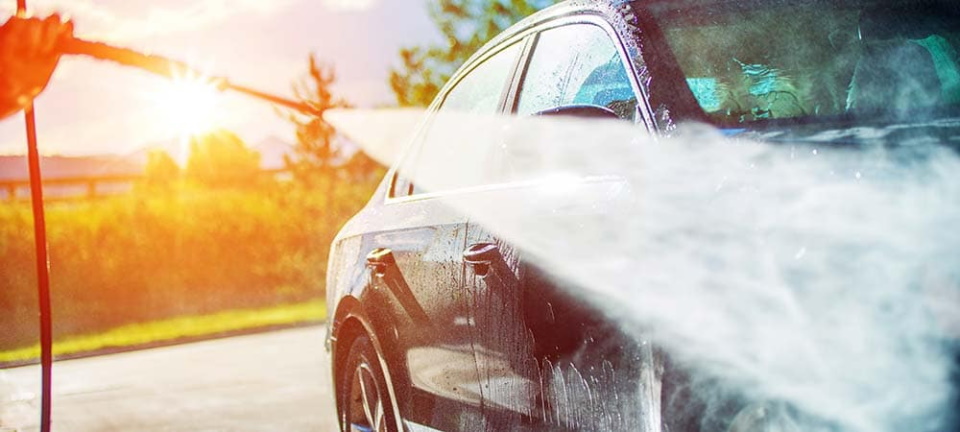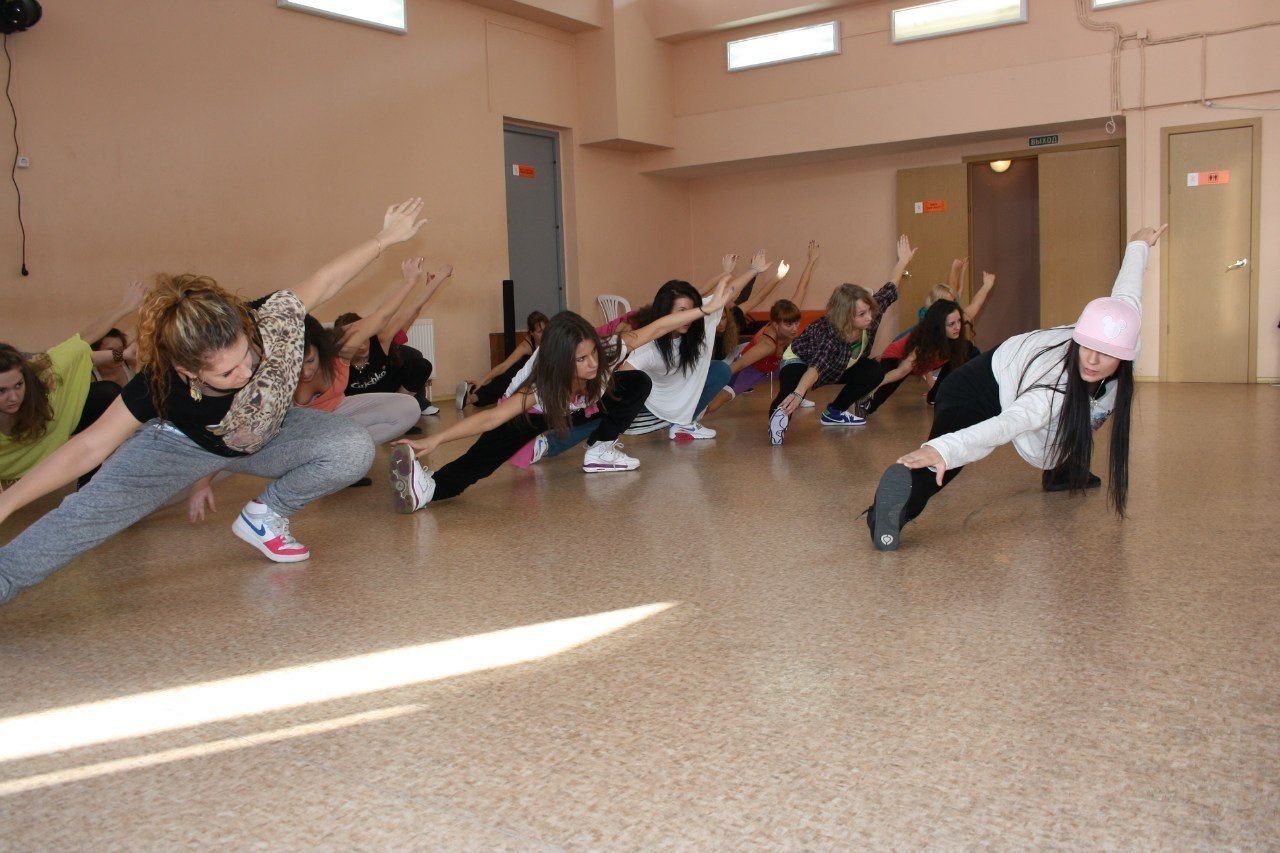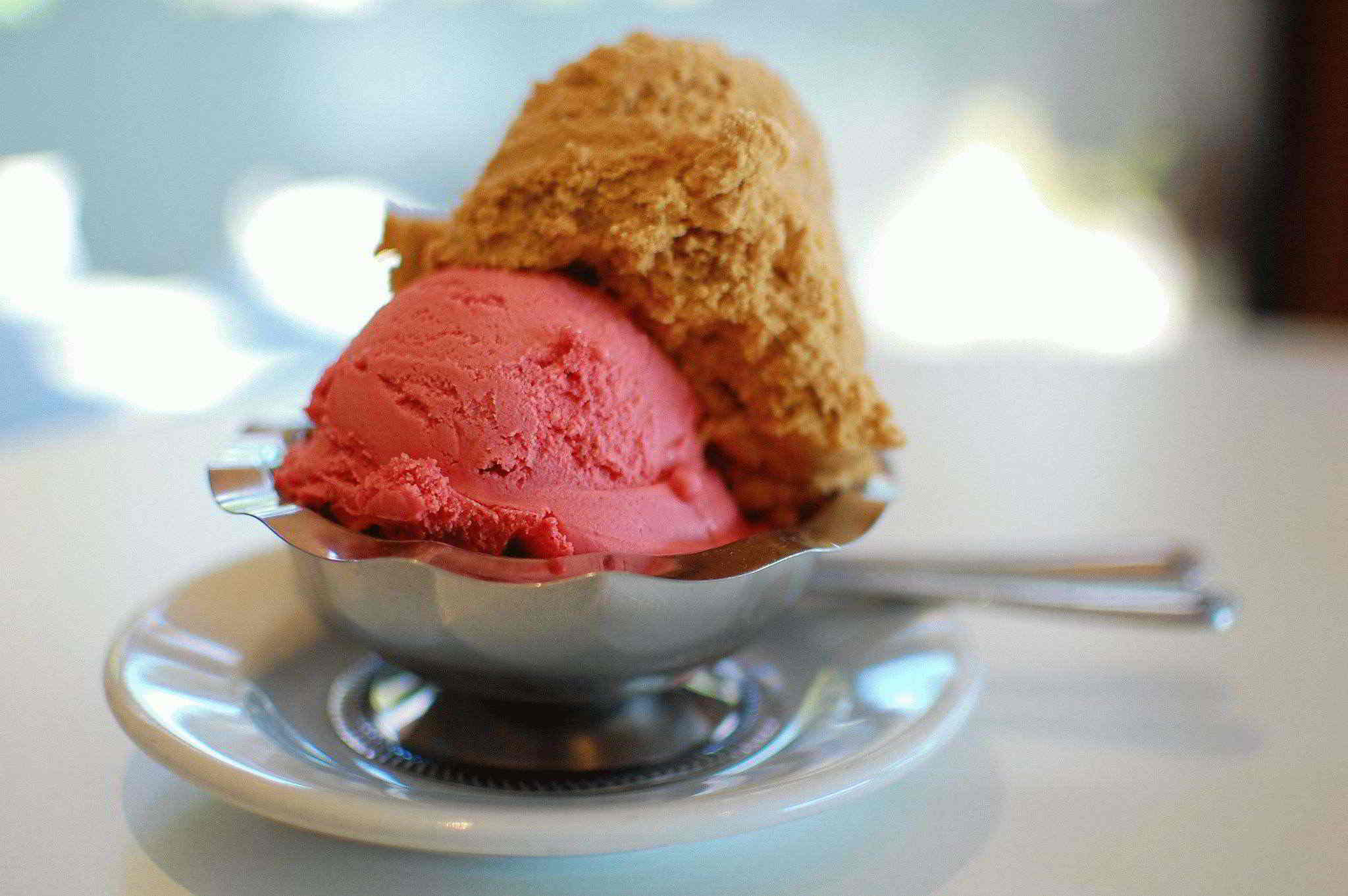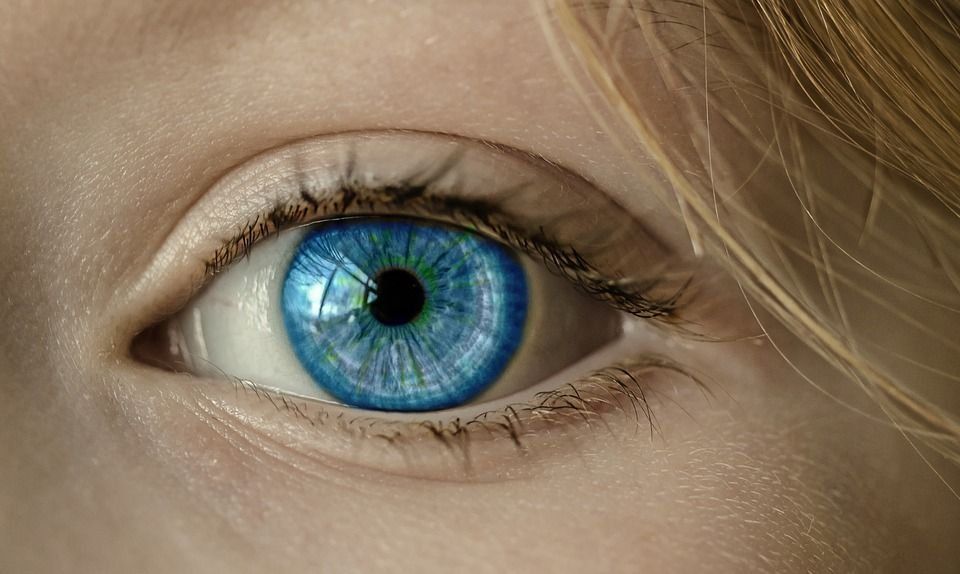Rating of the best floor screeds for 2022
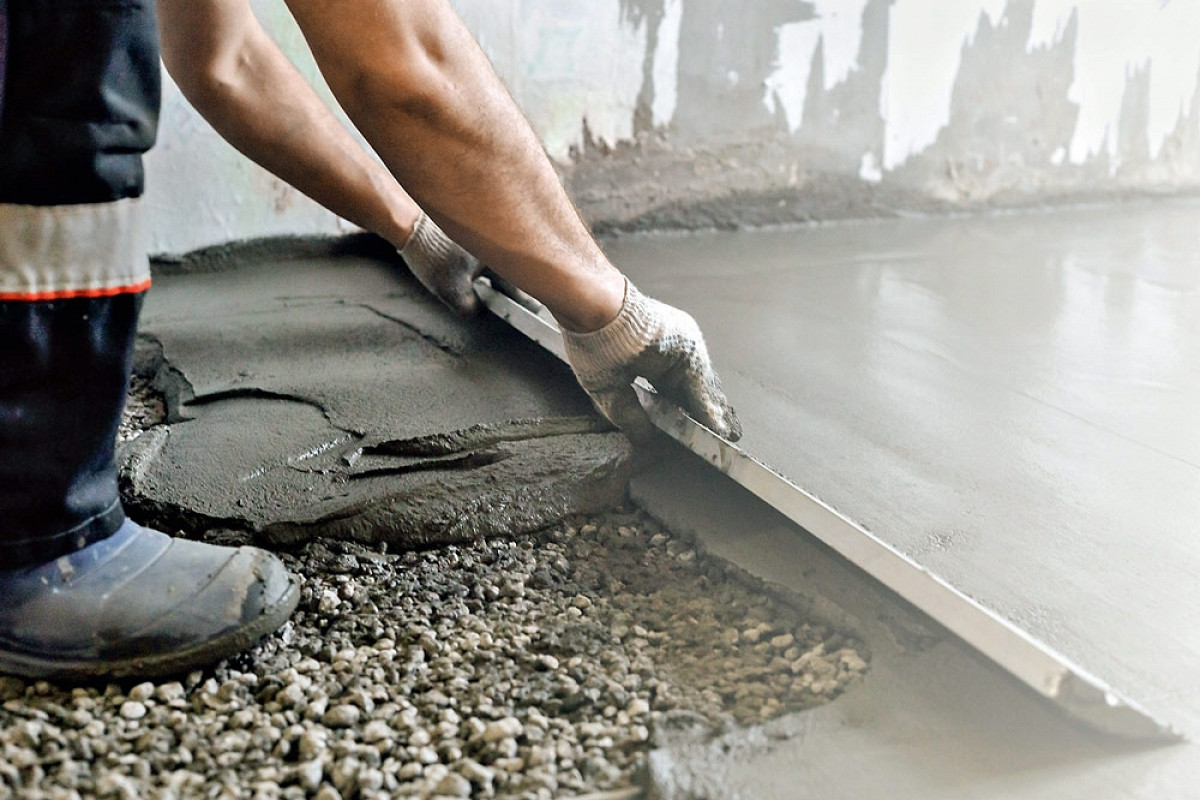
Repair is a responsible business. A major overhaul, when literally everything changes, is an even more serious task. From how well the floor is made, the comfort of living in this room will also depend in the future. Uneven and poorly made, they can quickly become unusable, which will not bring joy to anyone. Therefore, high-quality pouring, which is the upper part of the floor, the most heavily subjected to stress, is a very important part of the repair. It should not only perfectly level the surface, but also give it the necessary rigidity, and also hide the communications passing under it, if any.
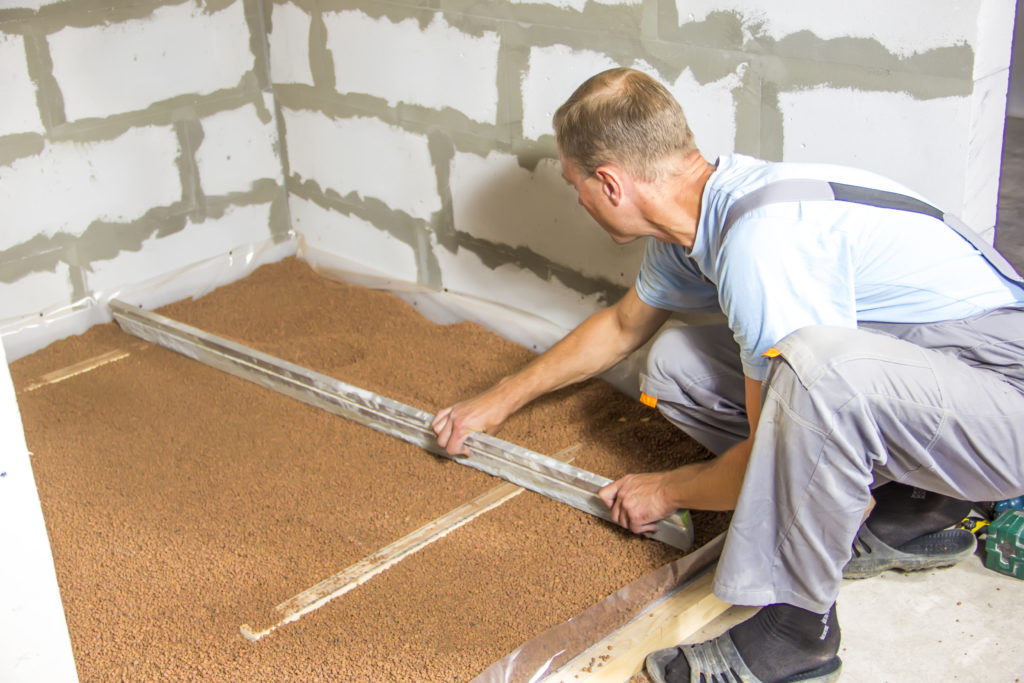
In industrial premises, the screed can also act as the final version, and in residential premises parquet, laminate, linoleum or some other coating will be additionally laid on it.And if it is made with flaws, then subsequently cracks or potholes may appear on it, which will also damage the material laid on top. An uneven floor not only looks unaesthetic, but can even be hazardous to health, since it is quite easy to lose balance on it and fall, catching on a ledge or falling into a hole. This is especially dangerous for children and the elderly. So it is better not to save on this part of the repair.
Content [Hide]
- 1 Types of screeds
- 2 Which screed to choose
- 3 Screed on lighthouses
- 4 The best manufacturers of screed mixtures
- 5 Rating of the best screeds
- 6 Errors in the selection and manufacture of screeds
Types of screeds
They are of three types: dry, semi-dry and wet.
Wet screed
Wet technology is the oldest, only it was used in the construction of houses 20-30 years ago, since others simply did not exist yet. The base of the floor is poured with a liquid mixture based on concrete or cement. If necessary, the surface is ground, but this is not always required, since the liquid has excellent self-leveling properties. When hardening, it is necessary to monitor the appearance of air bubbles and remove them in a timely manner, and after it has completely hardened, it is leveled with a spatula.
If desired, the liquid fill can be made reinforced, which will increase the strength of the finished solution, but still fail to protect it from cracks after drying, which are one of the main disadvantages of a liquid screed. The second drawback is that a rather long drying process slows down the speed of repair work. And the third significant drawback - the floor based on concrete or cement will not be warm. And in private houses with a shallow foundation, it can draw cold from the ground, and walking on it, even if covered with a carpet, will be very uncomfortable.
These shortcomings led to the invention of mixtures for semi-dry filling.
Semi-dry screed
It is good because it gives very little shrinkage or even dries out completely in its original form, and does not crack due to the low water content in the solution. For apartments in high-rise buildings, its use is an ideal option, since a very dense waterproof film, which must be laid on the base, will protect the apartments from below from flooding in the event of an emergency, and due to its porous structure, it has excellent soundproofing properties and retains heat well. At a cost, it is almost equal to wet filling.
The final layer can be laid much faster than with a wet screed. But for the final hardening, you need to wait about a month. So it is better not to rush to bring heavy things and furniture into the apartment.
But with all the many advantages listed above, this mixture also has a number of disadvantages. And the main one is that beginners may not be able to cope with it, since the technology for diluting this mixture is not as simple as it seems at first glance. If you make a mistake with the amount of water, the floor may be too fragile, uneven, or upset by a very long drying time.
These building mixtures are both based on concrete and cement-sand.
Concrete based mix
Concrete screed, or concrete-cement, since cement is present in many mixtures, is perfect for pouring uneven floors with ledges, pits or a large slope. This is due to the relatively low weight of such a mixture, which mostly consists of light fillers, so you can not be afraid to exceed the permissible load on interfloor floors.
In order to prevent cracks from appearing on the surface after drying, you can use an expanded clay substrate or make reinforcement.
A concrete surface with expanded clay base has a lot of advantages. It is environmentally friendly, has excellent heat-retaining and noise-insulating properties and is absolutely not subject to fire, which allows you to install a heating system to create a warm floor. Due to the use of expanded clay, the floor becomes breathable, which eliminates high humidity, as well as the spread of fungus or mold. This helps to create an excellent microclimate in the room. For the finishing layer on this screed, you can use any options.
To make the layer even lighter, sand is taken instead of expanded clay and thus a concrete-sand coating is made. But, with the exception of less weight, in all other respects it will lose to the option with expanded clay (it retains heat worse, lower sound insulation, etc.).
cement-based mixture
A semi-dry screed made on the basis of cement is very elastic due to the addition of plasticizers and fiber fibers to its composition. This allows much less water to be used than for wet cement pouring. The thickness of the fill layer depends on the condition of the subfloor, the smoother it is, the less layer is required. On relatively flat surfaces, it is about 3 cm. Advantages - the complete absence of shrinkage after drying. If the technology is observed, the appearance of cracks on the surface is excluded.
As with the use of a concrete-claydite screed, you can walk on the surface after 12 hours, and lay the finish layer after four days.
To facilitate and significantly speed up the process of laying this fill, you can use special machines. They are quite expensive, but they provide excellent surface quality that does not require subsequent alignment, and save not only time, but also consumable goods.
Dry screed
This is the laying of ready-made gypsum fiber boards with a waterproofing coating on a previously prepared base made of perlite sand, blast furnace slag, vermiculite or expanded clay already mentioned above. Gypsum fiber can be replaced with plywood or chipboard, which are water resistant.
This is the fastest and easiest method of all, which is perfect for old houses with wooden floors, as well as for residential and non-residential premises in multi-storey buildings. Another indisputable advantage is that it can be mounted at low temperatures, which is impossible with other pouring methods.
This method has a lot of advantages. It is completely non-flammable, does not emit toxic substances, and has excellent soundproofing and heat-retaining properties. Design features make it easy to hide communications passing under the floor. Despite the lightness, such a floor is able to take on a load of up to one ton per 1 sq. m.
Such a floor also has disadvantages, and one of the main ones is the danger of damage to it when moisture enters. Unlike a semi-dry concrete mix, which is not at all afraid of water, a dry one can deteriorate, deform and become moldy, which will necessitate its dismantling and drying. Another disadvantage is the large amount of dust that enters the air during its installation, so all installation work must be done in a respirator and goggles or in a gas mask. In terms of cost, this method is the most expensive of all discussed above.
Which screed to choose
In order not to make a mistake with the choice, it is necessary to take into account all the properties of the screeds listed above. For industrial buildings, if there is no urgency, you can use the old, time-tested, and easiest-to-manufacture wet pour.
For apartments, a semi-dry surface will be the most suitable, since it significantly improves indoor living conditions due to its versatility and the formation of a healthier microclimate, and in addition it is environmentally friendly and non-combustible.
You can add additional floor insulation or an antiseptic if there is a high probability of bacterial contamination.
If the work needs to be done quickly and the issue of saving is not acute, you can choose gypsum fiber or chipboard. They should also be used when flooring needs to be lightened as much as possible.
Screed on lighthouses
Regardless of which view you choose, you can make your workflow easier with beacons. For them, ceiling profiles are most often used, used in the installation of drywall, or their analogues - profile pipes, wooden beams, etc.
After the waterproofing layer is laid on the base of the floor and the zero level is set, the beacons must be attached with self-tapping screws. The distance between them is about 60 cm, but there cannot be less than three of them even in rooms with a small area, otherwise the strength of the floor will be insufficient. Then, from the far corner, expanded clay, sand or any other filler used as a base is poured between the lighthouses, and mortar is poured over it, flush with the upper level of the lighthouses, or the plates are fixed using a dry method.
The best manufacturers of screed mixtures
According to the results of many surveys and ratings, it is possible to single out the main, most popular manufacturers of mixtures, whose products are in steady demand in the market. They can be divided into three types:
- Russian firms - Bolars, Perfekta, Axton, Paladium, Rusean, Vilis;
- foreign companies with production located in Russia: Weber-Vetonit, KNAUF, Ceresit;
- foreign enterprises - LafargeHolcim.
Foreign-made products are not widely distributed on the territory of the Russian Federation, since their price is much higher than for Russian-made analogues, as a result of which the demand for them is low. The most popular are mixtures produced in the country under the control of foreign companies, which allows you to combine good quality and an adequate price.
Rating of the best screeds
To determine the most popular screeds, consumer reviews on the Yandex Market trading platform were studied. Positions are divided into four categories: mixtures of Russian companies for rough and finish pouring and similar products of foreign enterprises for base and finish pouring.
Mixtures for basic screed from Russian manufacturers
Russian-made goods are distinguished by a favorable price, which allows them to be used for economical, budgetary repairs.
Floor Screed Best Price
The cost of 25 kg - 132 rubles, 1 kg - 5.28 rubles.
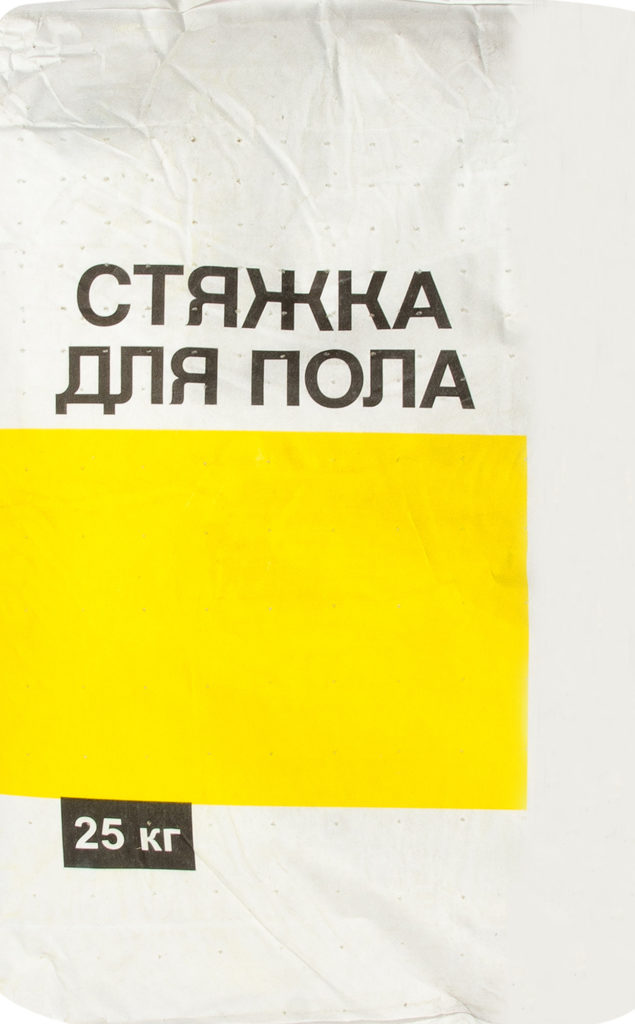
A very popular product among the population due to its economical cost. Very easy to use, suitable for smoothing height differences from 2 to 10 cm, can be used as a base for tiles or porcelain tiles, as well as linoleum, parquet or carpet. Once prepared, the solution should be used within two hours. Mixture consumption per 1 sq. m is 18 kg with a thickness of 1 cm. Temperature range - 5-30about Celsius.
- suitable for indoor and outdoor use;
- suitable for underfloor heating;
- moisture resistant;
- dries for at least a day;
- big weight;
- not suitable for sealing small depressions;
- contains large fractions of sand;
- low surface quality needs to be polished or filled with finishing mixtures.
Founding Startoline FC41 H
votes 0
The cost of 25 kg is 160 rubles, 1 kg is 6.4 rubles.
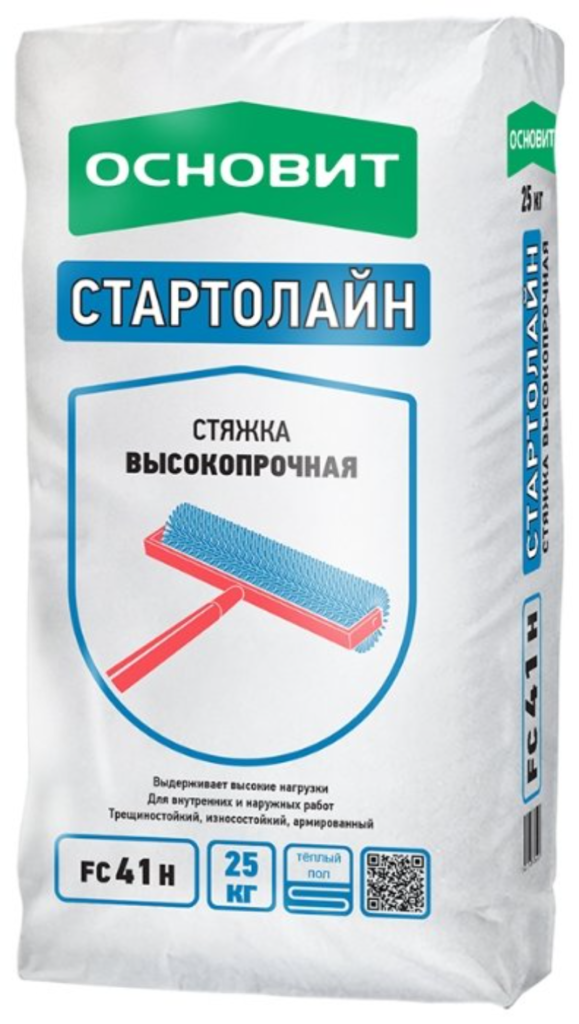
Base mortar with universal properties based on cement for all types of premises. Can be used with any finish coat. Suitable for indoor and outdoor work.
- frost-resistant;
- resistant to moisture;
- it is allowed to lay a layer up to 200 mm, which allows you to work with the most uneven surfaces.
- the solution is only good for 40 minutes;
- dries for a long time - 1 month.
Axton
votes 0
The cost of 25 kg is 188 rubles, 1 kg is 7.52 rubles.
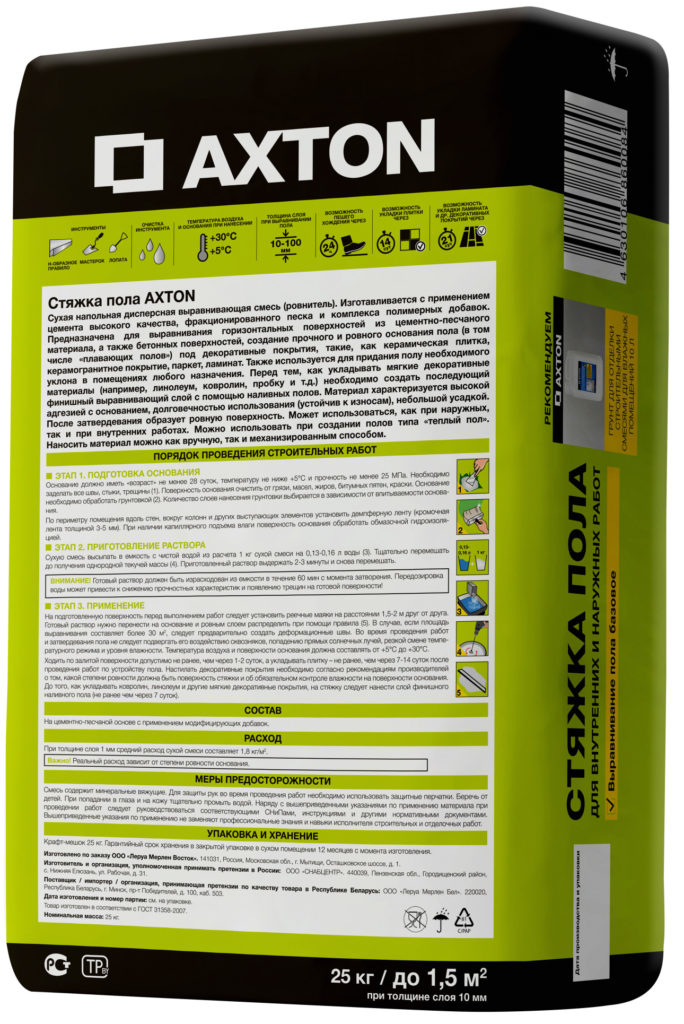
This cement screed can be applied both manually and mechanically. Suitable for high-quality leveling of the surface or for giving it the required slope. Can be laid in layers from 10 to 100 mm. Mixture consumption per 1 sq. m is 18 kg. It is used at temperatures from 5 to 30about Celsius.
- can be used outdoors and indoors;
- differs in high adhesion with other used materials;
- practically does not shrink;
- excellent strength.
- takes a long time;
- cracks may appear on the surface;
- large fractions of sand can be found.
Volma Rovnitel rough
votes 0
The cost of 25 kg is 262 rubles, 1 kg is 10.48 rubles.
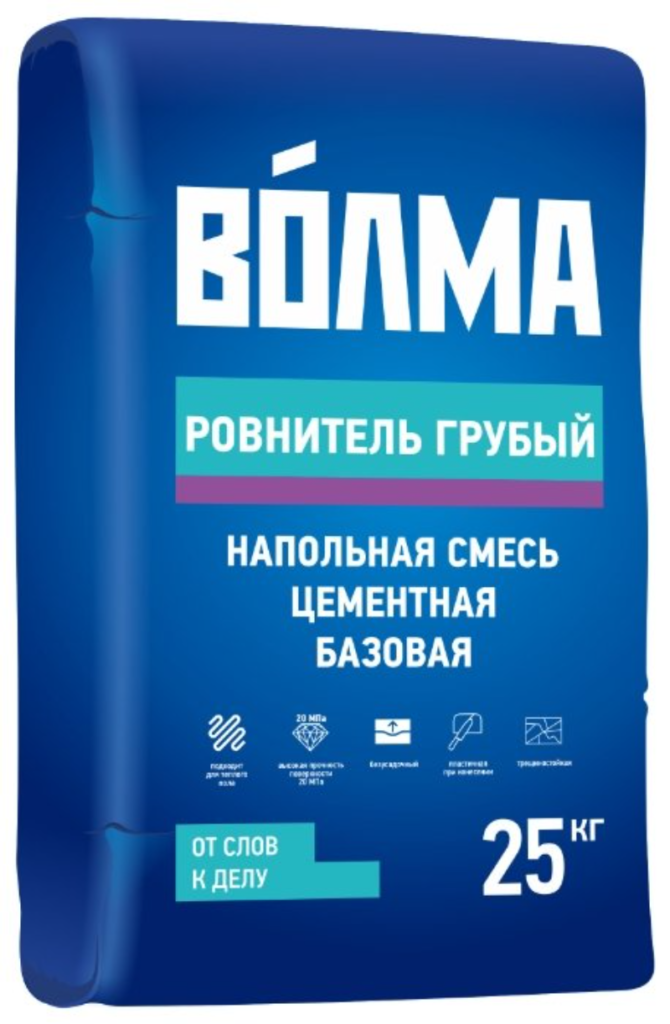
High quality cement based base coat mix. Suitable for any type of finish. Consumption is 18-20 kg per 1 sq. m.
- high frost resistance;
- self-levelling properties;
- withstands heavy weight;
- foot load is permissible after 7 hours;
- mixes well with water without forming lumps.
- maximum layer thickness - no more than 80 mm;
- increased consumption (more than 20 kg per 1 sq. m).
BOLARS Osnova
votes 0
The cost of 25 kg - 269 rubles, 1 kg - 10.76 rubles.
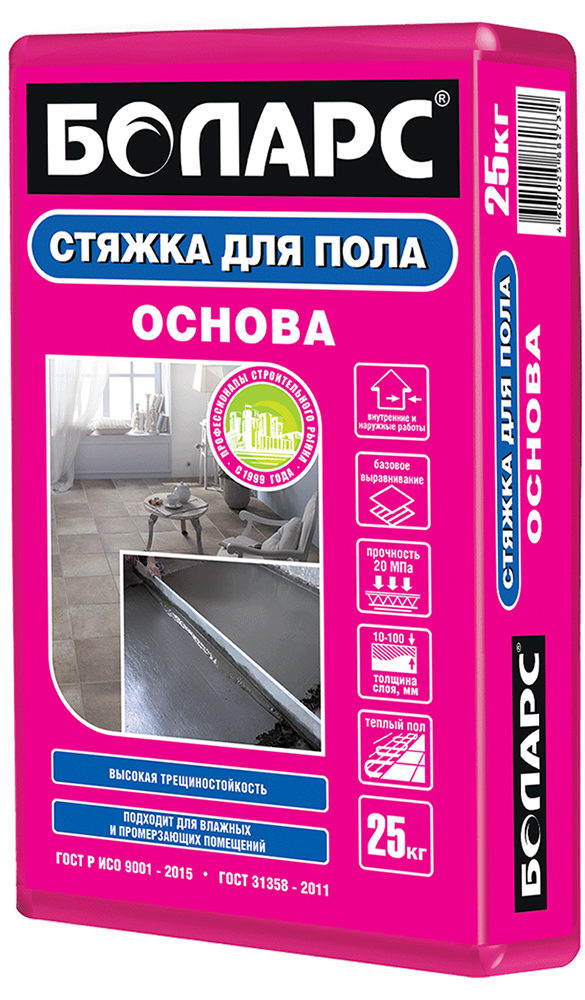
Cement high-strength product from a Russian manufacturer for pouring a base floor with a thickness of 10 to 100 mm at a temperature of 5 to 30about Celsius. Consumption is 18 kg per 1 sq. m.
- dries quickly;
- suitable for indoor and outdoor use.
- the solution is only suitable for one hour after dilution;
- load should not exceed 200 kg per 1 sq. cm.
The average cost of the most purchased mixtures for the subfloor from Russian manufacturers is 202.2 rubles. per bag, or 8.09 p. for 1 kg.
Base screed mixtures manufactured under foreign control
As a rule, construction products produced under the control of leading foreign companies are of higher quality than products of Russian manufacturers, but their price will also be somewhat higher.
Knauf Tribon
votes 0
The cost of 30 kg - 323 rubles, 1 kg - 10.77 rubles.
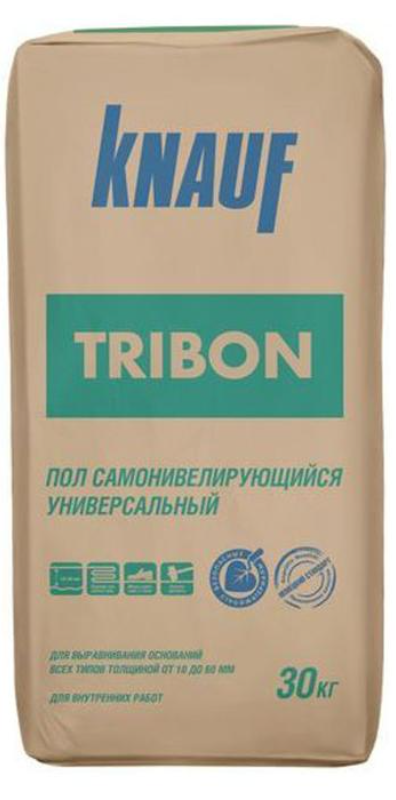
Dry cement-gypsum mixture, exclusively for interior use. Consumption is 17 kg per 1 sq. m. Suitable for arranging a warm floor.
- very durable;
- the surface has self-levelling properties;
- can be filled at a temperature of 0 degrees;
- suitable for any type of finish;
- quick-drying, you can walk on it after 6 hours.
- not suitable for outdoor work;
- the maximum layer is 60 mm.
Ceresit CN 175
votes 0
The cost of 25 kg is 422 rubles, 1 kg is 16.88 rubles.
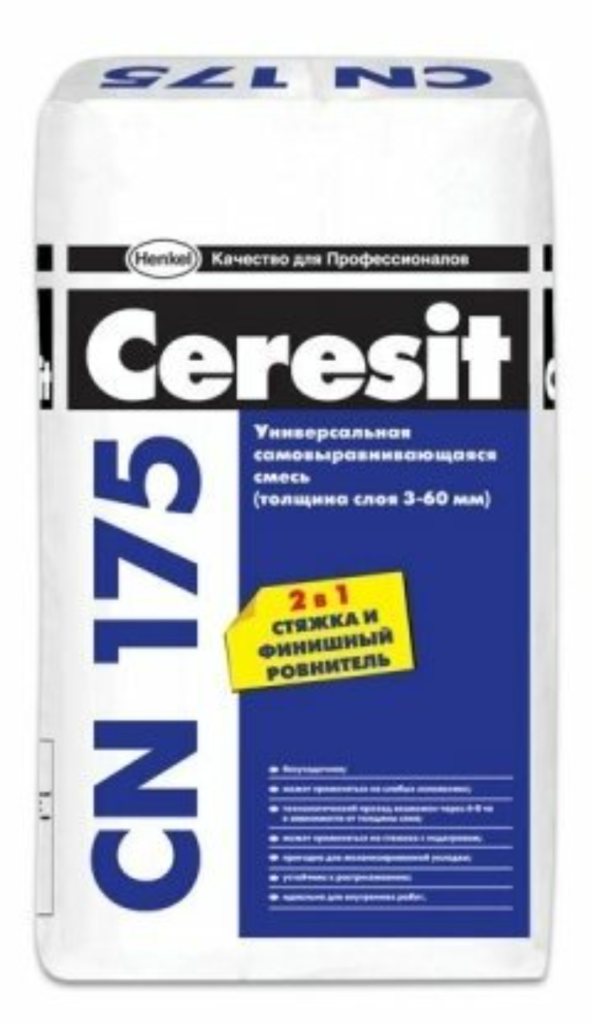
A versatile, cementitious indoor material that can be combined with any type of finish. Differs in economical consumption - 16 kg per 1 sq m of surface.
- self leveling;
- quick-drying: you can walk after 6 hours, completely dry - after 7 days;
- it is possible to apply at a temperature of 0 degrees;
- strength and resistance to stress.
- the solution is suitable for only 30 minutes;
- off-budget price.
Litokol LITOLIV BASIS
votes 0
The cost of 25 kg is 429 rubles, 1 kg is 17.16 rubles.
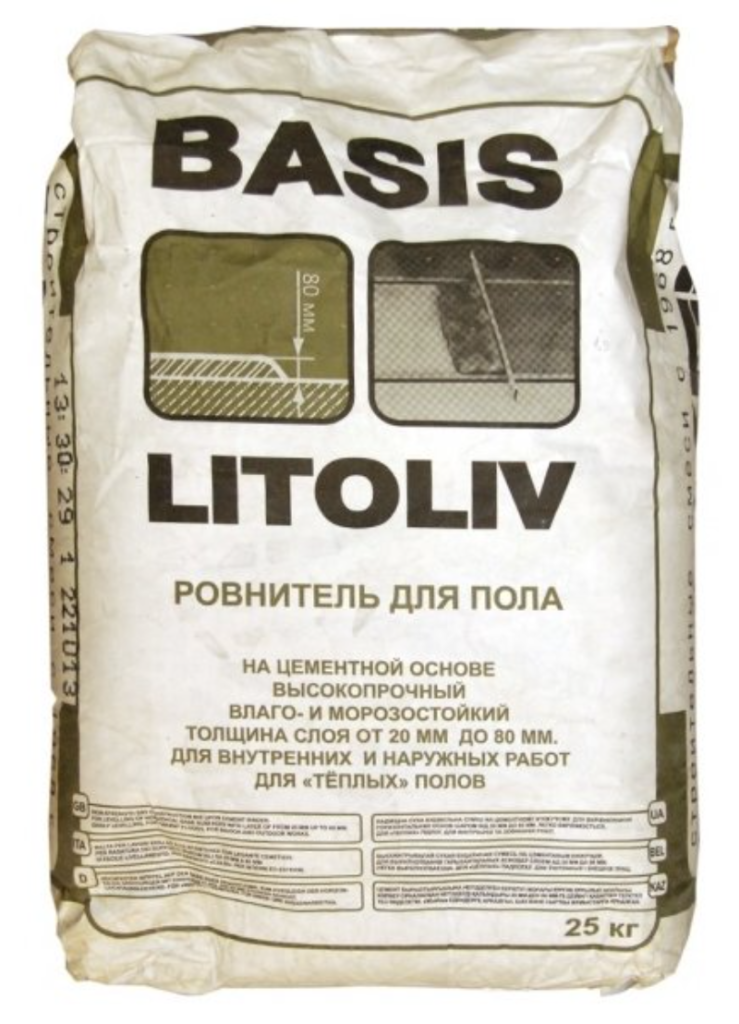
Cement mortar for creating semi-dry pouring from an Italian company combines good quality and affordable price. It can be used both indoors for any purpose, and for outdoor work. Consumption - 17.5 kg per 1 sq. m.
- frost-resistant;
- moisture resistant;
- high strength without cracks;
- the solution is good for two hours.
- dries for a long time, foot load is permissible no earlier than in a day.
Weber Vetonit 5000
votes 0
The cost of 25 kg is 705 rubles, 1 kg is 28.2 rubles.
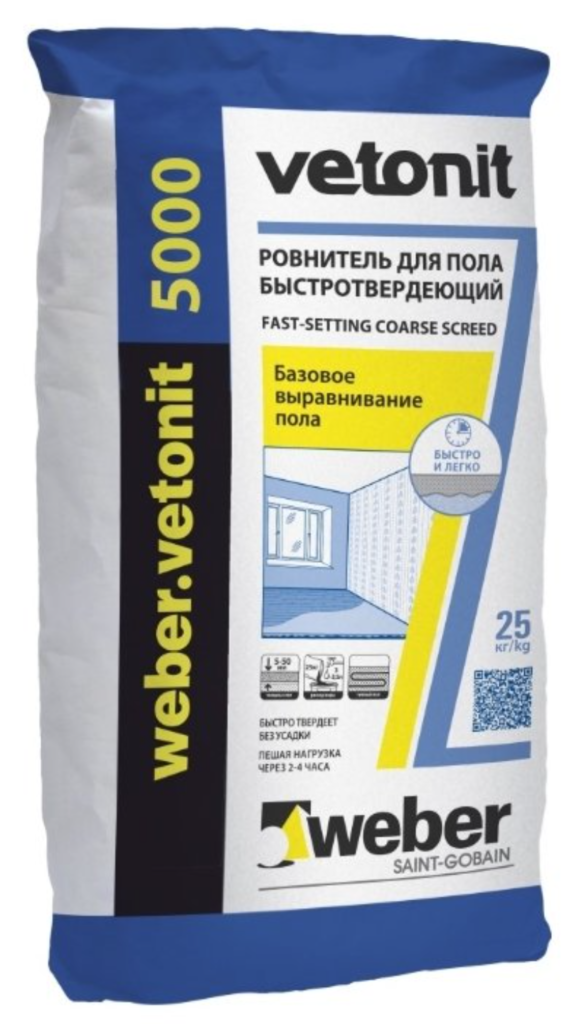
Base screed for indoor use based on cement. Suitable for use in rooms with any degree of humidity. Parquet, porcelain stoneware or stone can be used as the top layer. The consumption of the mixture is 18 kg per 1 sq. m.
- dries very quickly: foot load - after 2-4 hours, complete drying - after 5 days;
- small particles, no more than 1.2 mm;
- strength and resistance to weights;
- does not crack.
- unsuitable for outdoor work;
- the solution is good for only half an hour;
- the maximum possible layer is only 50 mm;
- high price.
Ceresit CN 83
votes 0
The cost of 25 kg is 744 rubles, 1 kg is 29.76 rubles.
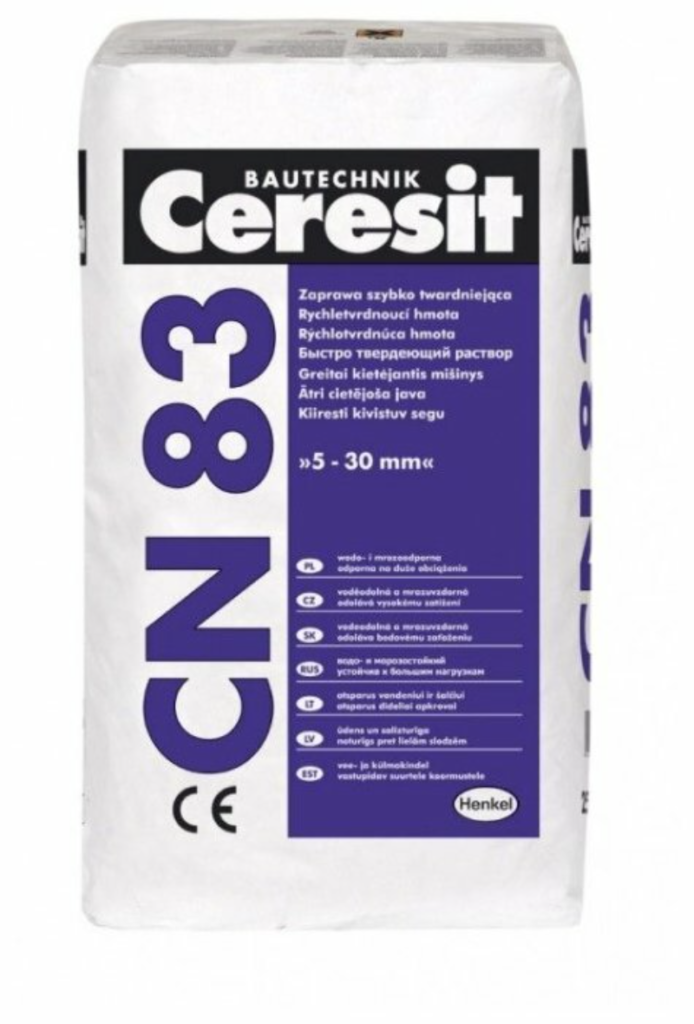
Universal cement grout suitable for outdoor and indoor floors. Consumption is 20 kg per 1 sq. m.
- frost-resistant;
- crack resistant;
- very durable surface;
- moisture resistant.
- suitable only for technical premises;
- only tiles can be used as a finishing layer;
- the solution is only good for 30 minutes after mixing;
- very high price.
The average cost of the most popular mixtures for creating a subfloor from Russian enterprises that are representative offices of foreign firms is 524.6 rubles. per bag, or 20.56 p. for 1 kg.
Finishing mixes from Russian manufacturers
These construction products are used to form the final layer.
Prospectors
votes 0
The cost of 20 kg is 202 rubles, 1 kg is 10.1 rubles.
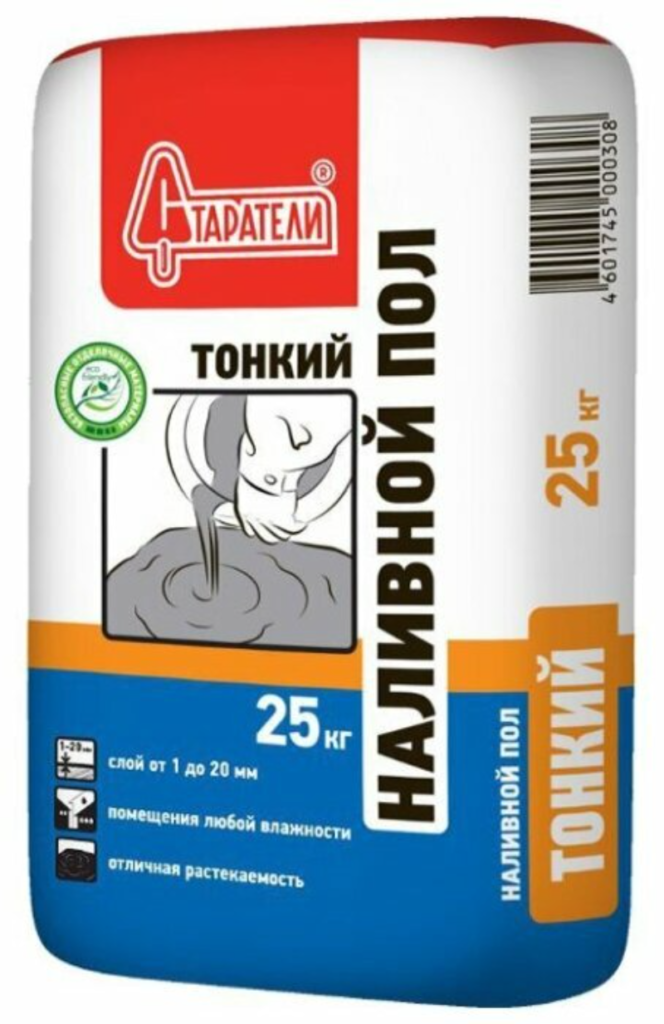
An economical universal material from a Russian manufacturer that can be used with any type of floor top. Consumption is only 14-15 kg per 1 sq. m.
- democratic price;
- economical consumption;
- the layer varies from 5 to 70 mm;
- Dries quickly, in about 5 hours.
- only for work indoors;
- the solution is only suitable for 40 minutes after mixing.
Volma Leveler Comfort
votes 0
The cost of 20 kg - 260 rubles, 1 kg - 13 rubles.
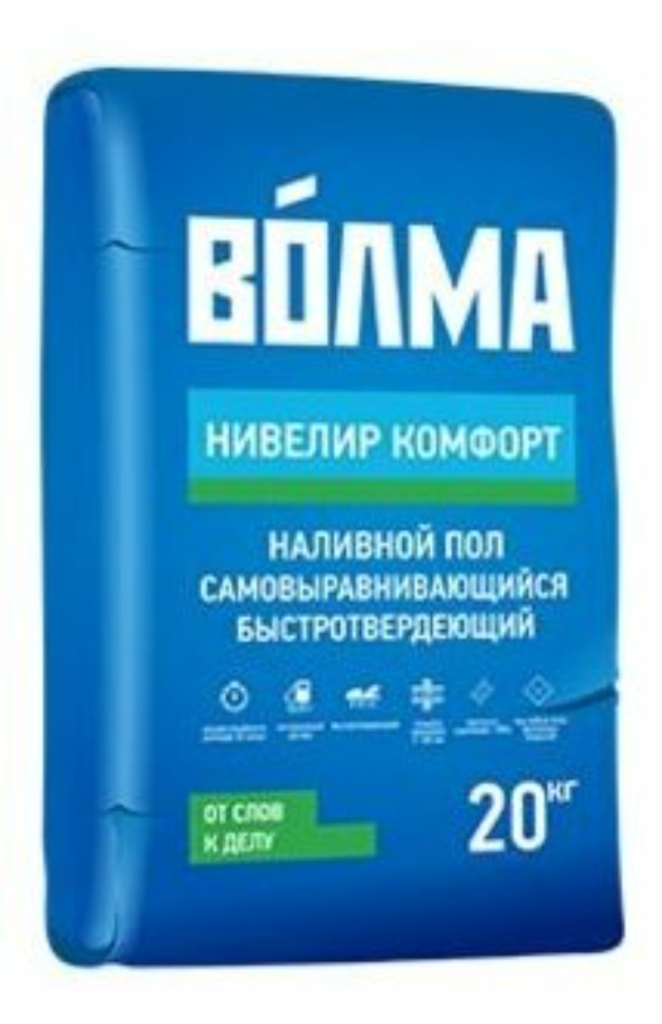
The products of the Russian company, which has proven itself well when leveling the floor in the premises. Can be used at temperatures from 5 to 30about Celsius. The consumption of the mixture is 12 kg per 1 sq. m.
- democratic price;
- the layer varies from 5 to 100 mm;
- quick-drying, foot load - after 4 hours;
- self leveling.
- not suitable for outdoor work;
- cracks cannot be ruled out.
Founded Niplin FC42 H
votes 0
The cost of 25 kg is 380 rubles, 1 kg is 15.2 rubles.
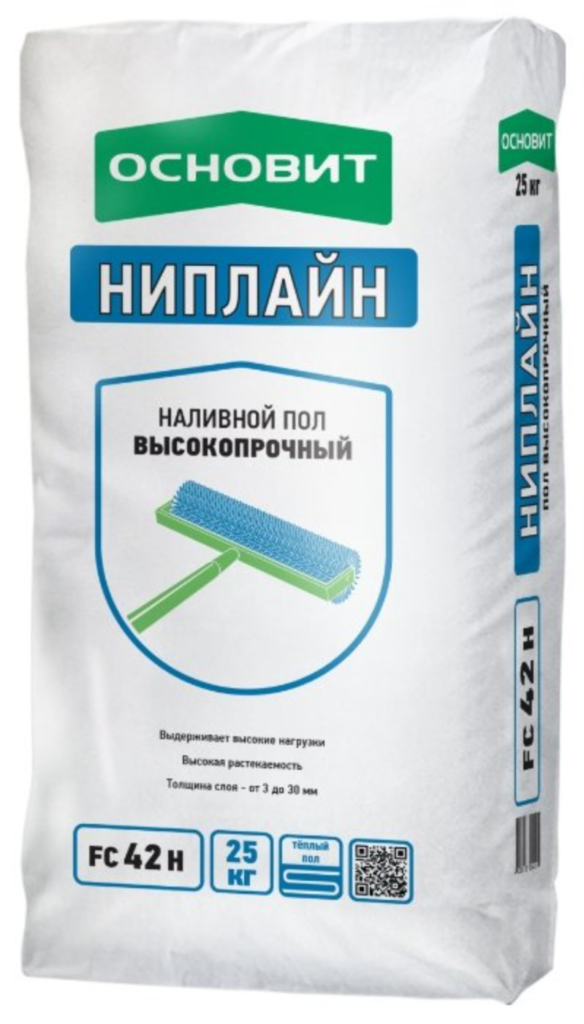
The material for finishing pouring from a Russian manufacturer is distinguished by an affordable price and impressive quality characteristics. Matches with any type of top coat finish. It is universal and can be used both in residential and technical premises. Consumption is 17 kg per 1 sq. m.
- high versatility;
- durable moisture resistant coating;
- fine-grained, fraction size is 0.63 mm.
- short viability of the solution - 40 minutes;
- takes a long time to dry, about 28 hours.
The average cost of the examined mixtures from Russian enterprises is 281 rubles. per bag, or 12.77 rubles. for 1 kg.
Finishing screed compounds produced under foreign control
Finishing mixtures from foreign manufacturers are often more expensive than Russian ones, but their quality is often higher.
Bergauf Boden Zement Gross
votes 0
The cost of 25 kg - 299 rubles, 1 kg - 11.96 rubles.
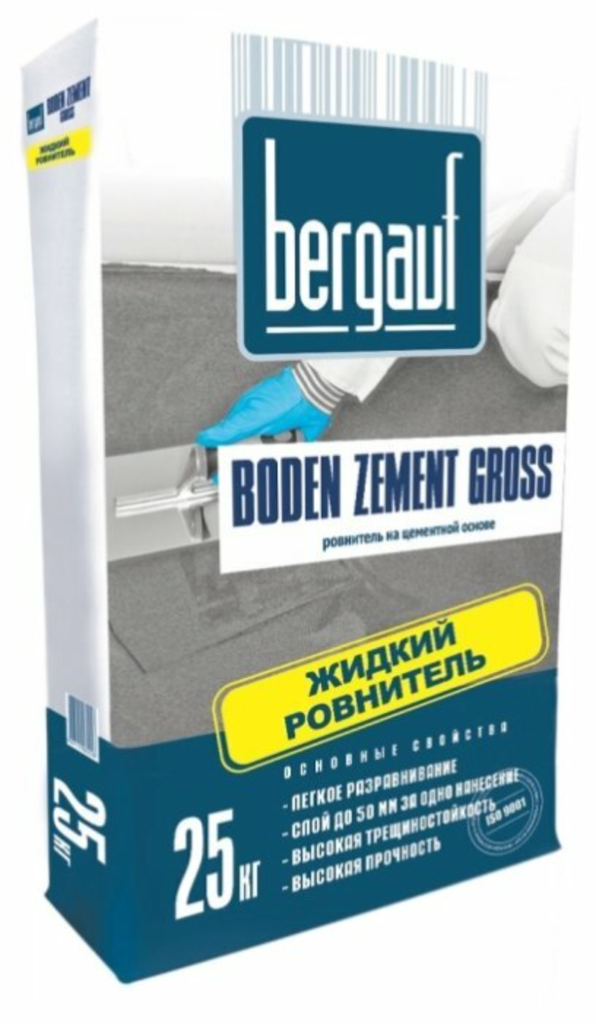
High-strength finishing compound with high hardness and bond strength.
For one fill, you can make a layer up to 50 mm thick.
- moisture resistant;
- used with any type of floor finishes.
- dries relatively long, foot load - after 12 hours, it takes 28 hours to dry completely;
- not suitable for outdoor work;
- uneconomical consumption: 18-20 kg per 1 sq. m;
- application temperature - not higher than 25about Celsius;
- the solution is only good for 30 minutes.
Litokol CR300
votes 0
The cost of 25 kg - 310 rubles, 1 kg - 12.4 rubles.
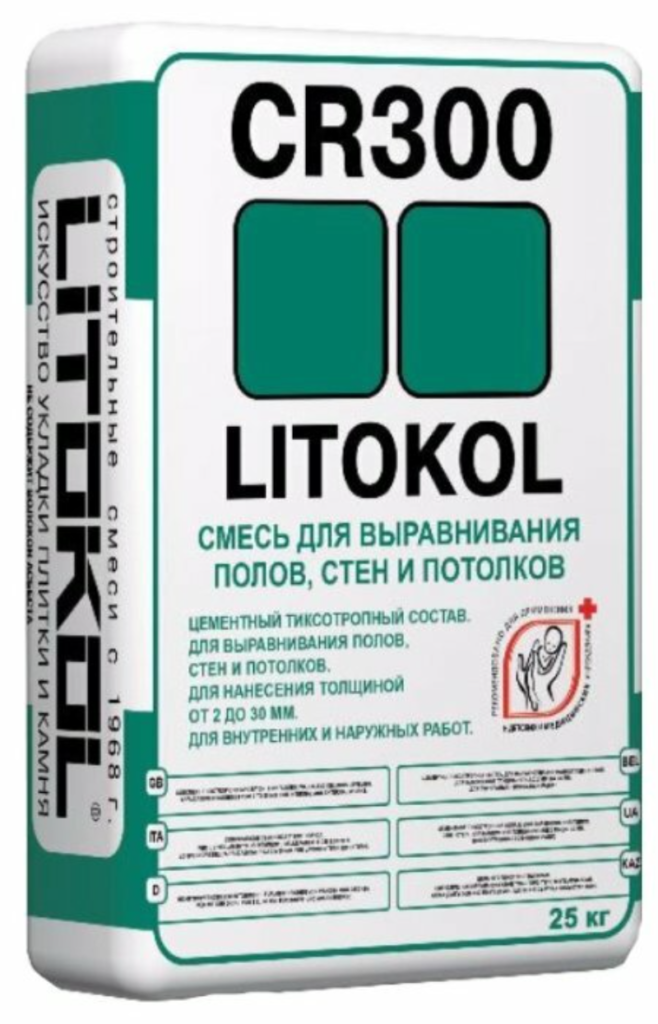
High quality material from an Italian manufacturer is distinguished by a favorable price comparable to Russian-made analogues.
- quick-drying, complete drying - after 7 hours;
- frost-resistant;
- excellent strength indicators;
- thickness - from 2 to 30 mm;
- Suitable for indoor and outdoor work.
- short viability of the solution - 30 minutes.
Ceresit CN 68
votes 0
The cost of 25 kg is 611 rubles, 1 kg is 24.44 rubles.
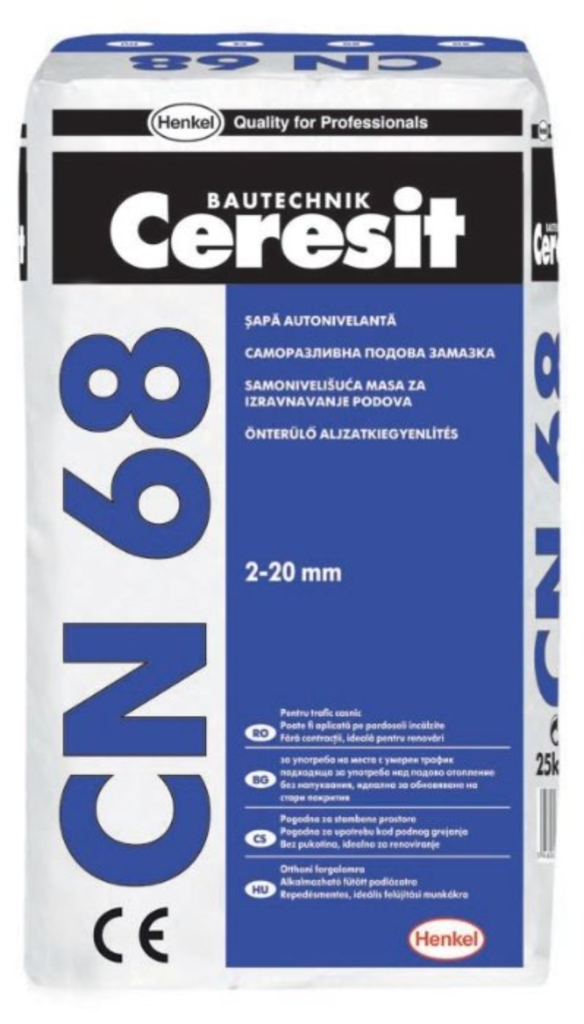
High-quality finishing filling, which can be left uncovered, or you can use any option (carpet, linoleum, etc.). Can be filled with a layer of 1-15 mm.
- quick-drying, foot load - after 6 hours;
- self leveling;
- does not crack;
- can be used for underfloor heating.
- only for work indoors;
- the solution is only suitable for 30 minutes;
- insufficient spreadability;
- high price.
The average cost of the most popular finishing mixes from Russian enterprises under foreign control is 407 rubles. per bag, or 16.27 p. for 1 kg.
Errors in the selection and manufacture of screeds
As in any other building related matter, the market offers such a huge range of products that it is easy to make mistakes when choosing the best floor design. The most common errors are listed below.
- Incorrect choice of screed type (outdoor product purchased for indoor use or vice versa).
- Using a finish fill instead of a rough fill or vice versa.
- Ignoring the degree of water resistance and load capacity specified by the manufacturer.
- The focus is only on cost, according to the principle the more expensive the better, without taking into account individual characteristics.
When pouring, a number of errors can be made, which in the end will greatly affect the quality of the finished solution.
- Incorrect choice of layer thickness. Three mistakes can be made in this matter. The first is that the thickness to which it is necessary to level the floor exceeds the maximum layer thickness for the selected mixture. The second is the formation of a too thin layer, which can subsequently crack. Third - when calculating the thickness, its change is not taken into account due to the use of reinforcement, the laying of a heat-insulating layer or other factors that directly affect the pouring layer up or down. As a result, there will either be an overrun of the mixture, or the dried version will not be of sufficient quality.
- Removing the rough fill in the room to the floor level in the entrance. In some cases, a one-level reference may be justified, for example, if it is necessary to provide comfortable movement for a wheelchair or pram. But even then it is necessary to reduce it by the size of the finishing layer, which will be done later. In other cases, such orientation will only lead to additional costs and an increase in work time.
- Insufficient cleaning of the base. Applying a screed mixture to a surface that has not been treated with an industrial vacuum cleaner and primer leads to a decrease in the quality of the finished floor due to the ingress of dust and debris into it.
- Incorrectly installed beacons can also cause the floor to skew and deform, as well as reduce its strength.
- The wrong consistency of the solution and the violation of the technology of its preparation, including stirring by hand instead of using a special mixer, can ruin the result of using even the best product.
- Failure to use a damper porous tape when pouring near walls is fraught with the formation of cracks due to heating and subsequent cooling of the solution. The tape compensates for thermal expansion and will not give cracks a chance to appear.
- Wetting an already flooded surface can result in the formation of voids, bumps and bubbles. In order to retain moisture inside the floor until the end of all the necessary chemical processes occurring in it, it is necessary to cover the floor with a durable film that will create the effect of a greenhouse without harm to its top layer.
A little trick from the builders. If any communications pass under the screed, then in order to fix their exact location, they must be sketched or photographed before pouring. This will greatly simplify life in the event of leaks or malfunctions and the associated need to dismantle part of the floor.
Pay attention to the choice of material for work, do not forget about the new products on the market, read the instructions, do not deviate from the technology - and let the result of the repair bring only joy!
new entries
Categories
Useful
Popular Articles
-

Top ranking of the best and cheapest scooters up to 50cc in 2022
Views: 131651 -

Rating of the best soundproofing materials for an apartment in 2022
Views: 127690 -

Rating of cheap analogues of expensive medicines for flu and colds for 2022
Views: 124519 -

The best men's sneakers in 2022
Views: 124033 -

The Best Complex Vitamins in 2022
Views: 121940 -

Top ranking of the best smartwatches 2022 - price-quality ratio
Views: 114980 -

The best paint for gray hair - top rating 2022
Views: 113395 -

Ranking of the best wood paints for interior work in 2022
Views: 110318 -

Rating of the best spinning reels in 2022
Views: 105329 -

Ranking of the best sex dolls for men for 2022
Views: 104366 -

Ranking of the best action cameras from China in 2022
Views: 102216 -

The most effective calcium preparations for adults and children in 2022
Views: 102011

